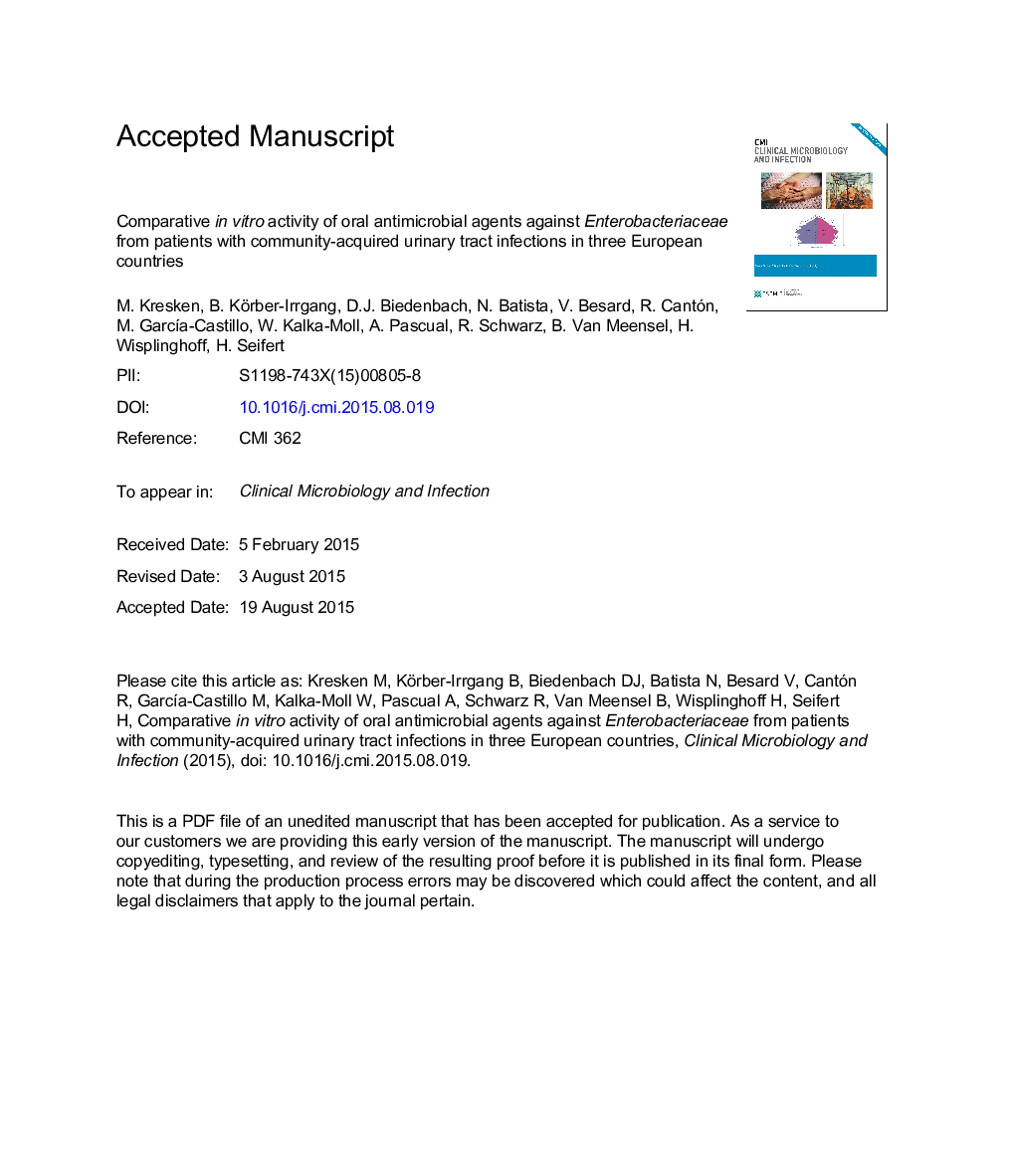| Article ID | Journal | Published Year | Pages | File Type |
|---|---|---|---|---|
| 6129086 | Clinical Microbiology and Infection | 2016 | 16 Pages |
Abstract
Enterobacteriaceae causing community-acquired urinary tract infections were examined in selected outpatient clinics and hospitals in Belgium, Germany and Spain using EUCAST breakpoints for susceptibility. A total of 1190 isolates were collected. Escherichia coli isolates were resistant to amoxicillin-clavulanic acid (28.1%), ciprofloxacin (23.4%) and trimethoprim-sulfamethoxazole (21.4%) compared with fosfomycin and nitrofurantoin (each, <1.5%). Ceftibuten (MIC50/90 0.25/0.5 mg/L) and ceftriaxone activity (MIC50/90 â¤0.25 mg/L) was comparable. Ceftibuten (MIC90 â¤0.25 mg/L) was also active against Proteus mirabilis and Klebsiella spp. Extended-spectrum β-lactamase phenotypes were 7.1% for E. coli, 5.6% for Klebsiella pneumoniae and 0.4% for P. mirabilis. Resistance was common among men and elderly women.
Keywords
Related Topics
Life Sciences
Immunology and Microbiology
Microbiology
Authors
M. Kresken, B. Körber-Irrgang, D.J. Biedenbach, N. Batista, V. Besard, R. Cantón, M. GarcÃa-Castillo, W. Kalka-Moll, A. Pascual, R. Schwarz, B. Van Meensel, H. Wisplinghoff, H. Seifert,
